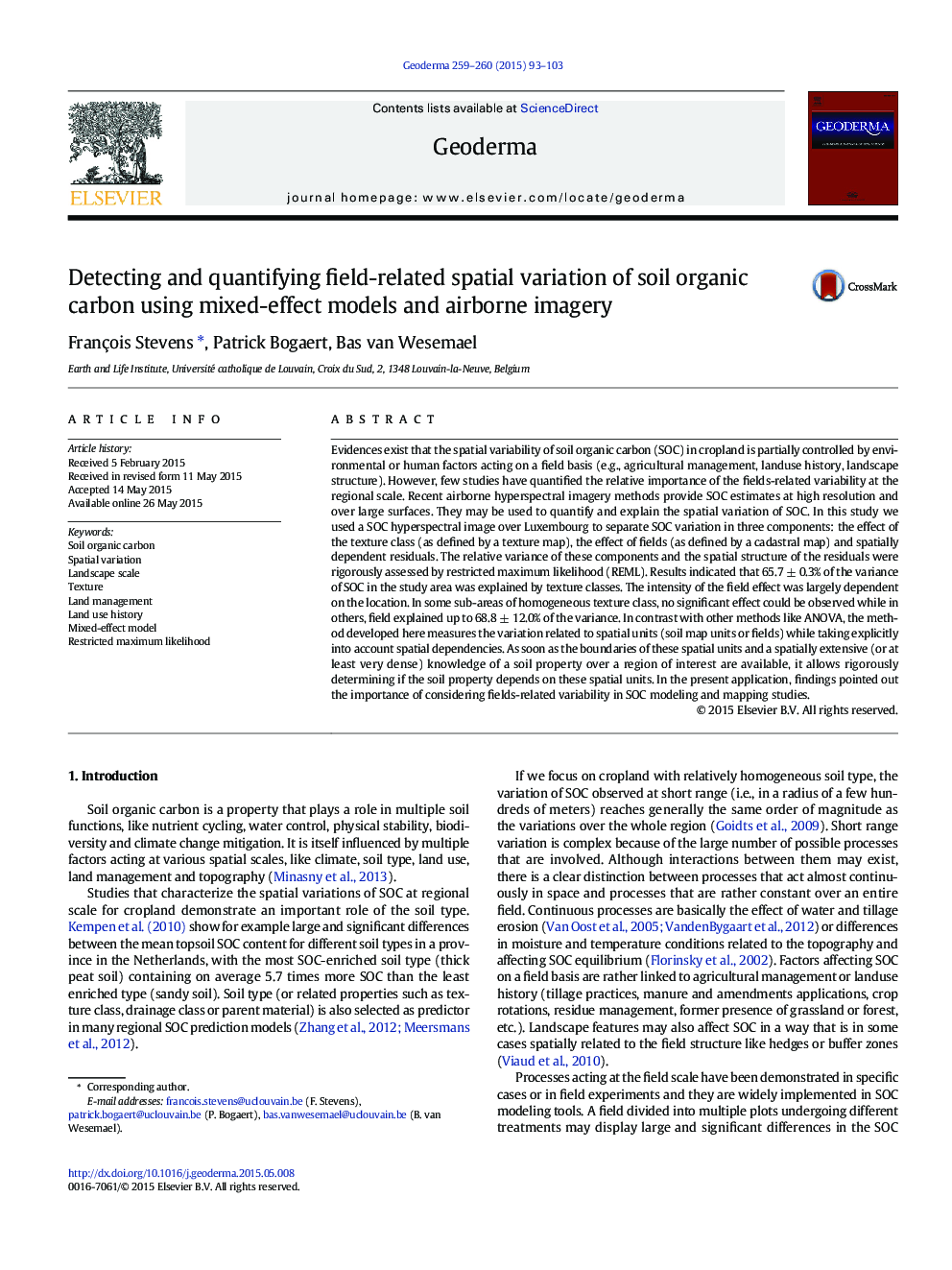| کد مقاله | کد نشریه | سال انتشار | مقاله انگلیسی | نسخه تمام متن |
|---|---|---|---|---|
| 6408504 | 1629456 | 2015 | 11 صفحه PDF | دانلود رایگان |
- Our method allowed separating the components of variation of soil organic carbon associated with spatial units in Luxembourg.
- A soil organic carbon image obtained from airborne hyperspectral measurements was exploited.
- Texture is the main factor controlling SOC at regional scale, explaining 65.7 ± 0.3 % of its variance.
- The influence of fields largely depended on the location with up to 68.8 ± 12.0 of the variance explained in some landscapes.
- The presence of possible field-related variation should be considered in SOC inventory, modeling and digital mapping studies.
Evidences exist that the spatial variability of soil organic carbon (SOC) in cropland is partially controlled by environmental or human factors acting on a field basis (e.g., agricultural management, landuse history, landscape structure). However, few studies have quantified the relative importance of the fields-related variability at the regional scale. Recent airborne hyperspectral imagery methods provide SOC estimates at high resolution and over large surfaces. They may be used to quantify and explain the spatial variation of SOC. In this study we used a SOC hyperspectral image over Luxembourg to separate SOC variation in three components: the effect of the texture class (as defined by a texture map), the effect of fields (as defined by a cadastral map) and spatially dependent residuals. The relative variance of these components and the spatial structure of the residuals were rigorously assessed by restricted maximum likelihood (REML). Results indicated that 65.7 ± 0.3% of the variance of SOC in the study area was explained by texture classes. The intensity of the field effect was largely dependent on the location. In some sub-areas of homogeneous texture class, no significant effect could be observed while in others, field explained up to 68.8 ± 12.0% of the variance. In contrast with other methods like ANOVA, the method developed here measures the variation related to spatial units (soil map units or fields) while taking explicitly into account spatial dependencies. As soon as the boundaries of these spatial units and a spatially extensive (or at least very dense) knowledge of a soil property over a region of interest are available, it allows rigorously determining if the soil property depends on these spatial units. In the present application, findings pointed out the importance of considering fields-related variability in SOC modeling and mapping studies.
Journal: Geoderma - Volumes 259â260, December 2015, Pages 93-103
